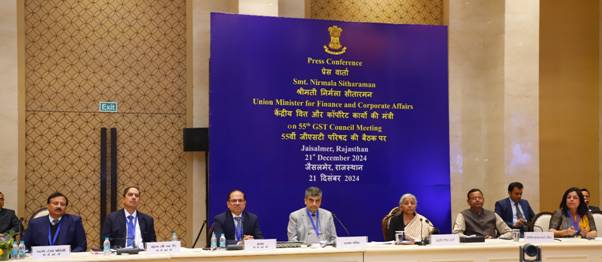In a notable shift, the recovery rate in Goods and Services Tax (GST) cases involving input tax credit (ITC) fraud has surged in FY24. According to government sources familiar with the matter, the Directorate General of GST Intelligence (DGGI) has managed to recover more than 12% of the dues, a significant improvement from the mere 2-3% recovered in previous years.
Impact on Ordinary Citizens: Surprisingly, even common citizens are falling victim to these fraudulent schemes, as highlighted by GST compliance experts. Fraudsters’ methods are becoming increasingly sophisticated, making it imperative for all taxpayers to be vigilant.
Scope of GST Frauds: During FY24, the DGGI identified GST frauds amounting to a staggering Rs 21,089 crore, out of which Rs 2,577 crore has already been recovered. These frauds span across various sectors, with manufacturing and real estate being particularly vulnerable.
Challenges in Recovery: Despite recent arrests and crackdowns, recovering fraud money remains a challenge. Culprits often launder ill-gotten gains, making it difficult for authorities to reclaim the defrauded amount. In some instances, fraudsters exploit unsuspecting individuals by collecting their Know Your Customer (KYC) documents for illicit purposes.
How ordinary citizens are trapped
Modus Operandi: The modus operandi typically involves the creation of fake invoices to exploit GST benefits. Fraudsters operate by establishing complex schemes, often involving shell entities and double benefits, thereby evading taxes and siphoning off funds.
This practice is rampant in sectors like manufacturing and real estate. Several detected cases involve complex schemes through which entities get double benefits. Raw goods needed by manufacturers are provided without paper trail or paying duty . Then a fake invoice is provided for the same goods, so that manufacturers can avail input tax credit.
“Goods that shouldn’t have been moved without paying duties are being moved and are being married to fake invoices generated. This way, the goods provider is able to move the goods out without paying duties while the manufacturer is able to avail input tax credit,” said the official. “There are racketeers across the country who are creating fake invoices ,” he said.
In some cases, even commoners are falling prey to these frauds, said a GST compliance expert. Fraudsters collect Know Your Customer (KYC) documents from gullible people by promising loans or other benefits. Then, without the knowledge of the individual, shell entities are created using the KYC and these entities produce fake GST receipts.
Preventive Measures: To combat these challenges, the DGGI has adopted a proactive strategy, leveraging advanced technologies like artificial intelligence and data analytics. Additionally, collaboration with other regulatory bodies and enhanced vigilance are being emphasized to detect fraudulent activities at an early stage.
Visit www.cagurujiclasses.com for practical courses











